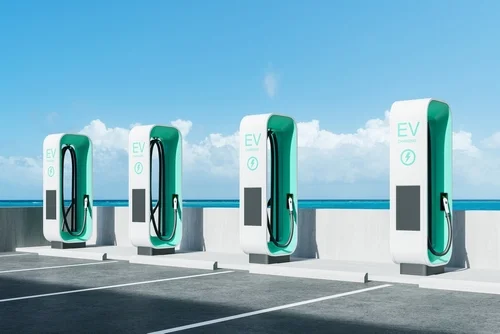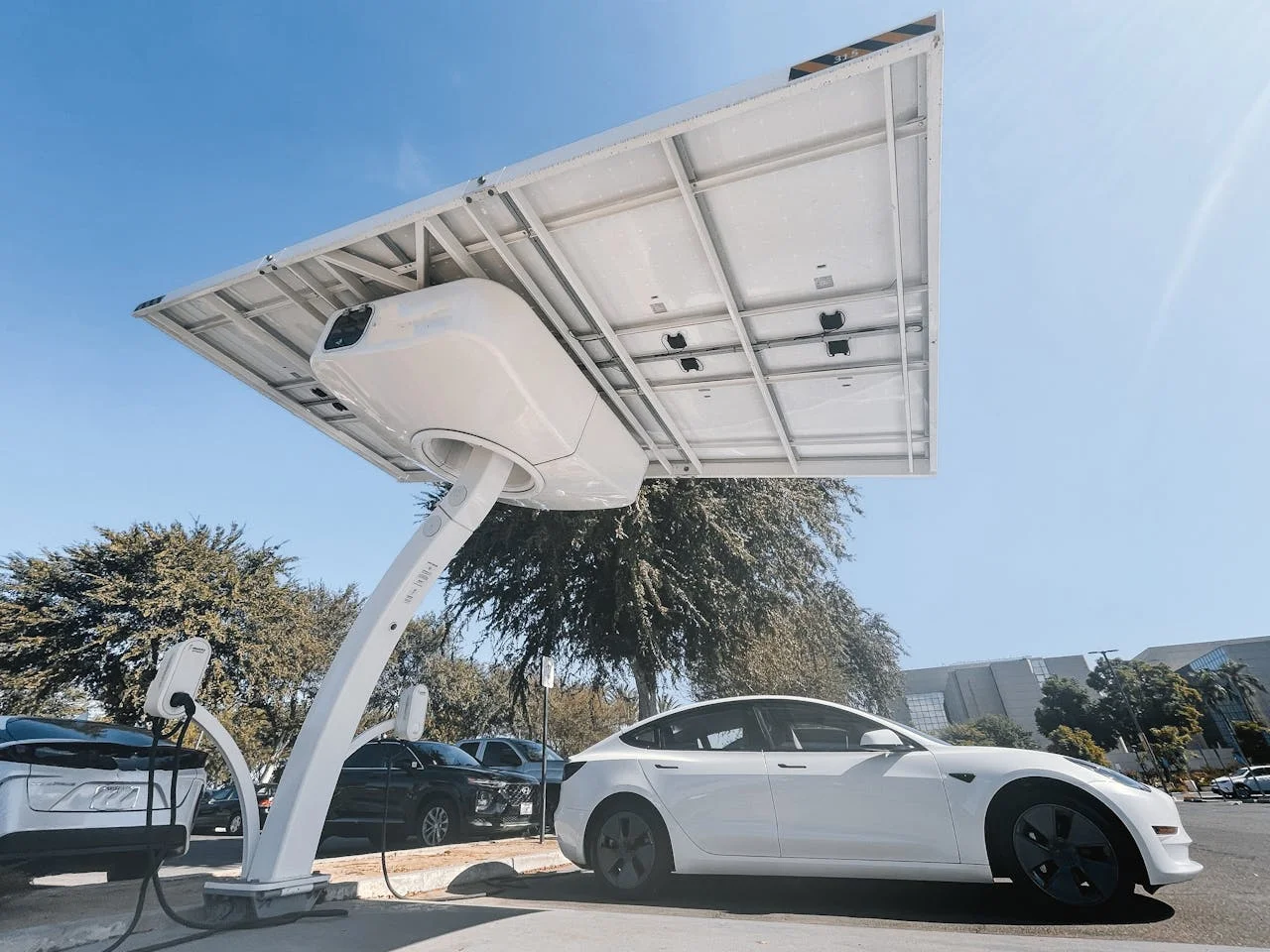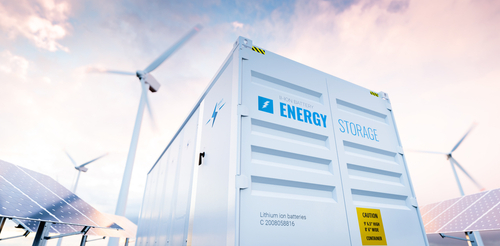Charging Infrastructure for Electric Vehicles: Building the Future
27 Oct, 20254 minutes
Electric transportation is picking up pace rapidly. Since the past decade, electric car global sales have increased from a few hundred thousand to over ten million per annum. EVs in select countries today account for one-third of new car sales and in some countries, more than half. The shift represents an unprecedented new strain on charging infrastructure. The deployment of charging infrastructure for vehicles has been transforming from pilot initiatives to a worldwide engineering project.
What is EV Charging Infrastructure?
Charging infrastructure refers to the set of equipment, systems, and procedures by which electricity from the grid is transmitted into an electric vehicle battery. It comprises:
- Home, office, and public car park install AC chargers.
- Highwayside rest stops with DC fast chargers of hundreds of kilowatts.
- Transformers, cables, switchgear, and distribution systems.
- Internet software systems for load balancing, authentication, and payments.
In practical terms, the answer to what is charging infrastructure refers to the infrastructure of the transportation system which makes it practical to drive electric vehicles. Without it, take-up stops, as the vehicles become impractical to run.
Size and Current Capability - Is Charging Infrastructure Keeping up with Demand
The simple answer is no. EV registration has reached 1.62 million fully electric cars, making up 34.6% of new car registrations in 2025 in the UK. Public charging stations, on the other hand, total only 82002 as of July 2025 with only 20% rated for fast charging.
Although the network grew 27% year-over-year, adding 17,370 devices since July 2024, 56% of potential buyers still cite limited charger availability as a major barrier, highlighting persistent gaps in rural areas and grid capacity.
New projections indicate a need for 280,000 to 480,000 public chargers by 2030 to support an expected 7 million EVs, underscoring the urgency for accelerated investment.
As per estimates, it would take around 7,800 level 3 public chargers to serve per 1.1 million on-road EVs and maintain utilisation in equilibrium. The ratio results from calibrating simulations of day-in-the-life travel, charge dwell times, and station volumes.
As an example, if an average vehicle visits once every three days, and one Level 2 charger can support roughly 10 vehicles per week, then 300,000 EVs in a city would need at least 4,000 - 5,000 conveniently located public chargers just to keep it convenient. Corridor travel and fleet depots provide extra demand.
Today, most areas have just a small percentage of what is required.
Power Profiles & Load Class
Charger type directly influences needs in terms of infrastructure.
- Level 1 charging (1 - 2 kilowatts) offers just 3 - 5 miles of range per hour, and it's ideal for home overnight charging.
- Level 2 charging (7 - 11 kilowatts) will generally contribute 25 - 35 miles per hour and is the home, work, and destination workhorse.
- DC fast charging (50 - 350 kilowatts) can add 200+ miles of range in less than half an hour.
That's why throughput becomes critical: at 50 per cent utilisation, a 250-kilowatt fast charger can handle 40 - 50 vehicles per day. Scale it across a 10-stall facility and you're at approximately 400 vehicles per day, if the local grid and facility design can support it. These sorts of turns allow long-distance highway routes to become economical.
Cost of Installations
The project cost of economic EV charging infrastructure is often an underestimation. It can take less than $5,000 (£3,714.15) in hardware to purchase one Level 2 charge point, but installation, trenching, permitting, and grid tying raise it to $10,000 - $15,000 (£7,428 - £11,142) in project cost.
For high-capacity fast chargers, those numbers accelerate quickly. 150-kilowatt versions can cost as much as $40,000 (£29,713.20) to $50,000 (£37,141.50), but location work and grid adaptation can double or triple it. Multi-stall fast-charging stations can cost as much as $500,000 (£371,415.00) to $1 million (£0.74 million).
Utilisation is the key variable. An asset at 10 per cent utilisation can take centuries to pay back its cost. Raise it to 30 per cent and economies become significantly better, especially if revenue is supplemented by retail agreements or fleet deals.
Grid Integration & Technical Issues
Each megawatt of charging capacity also demands infrastructure at the grid level. To put this in perspective, four 250-kilowatt chargers operating at the same time take one complete megawatt, and this represents peak loading of an office skyscraper.
To cope, operators are increasingly relying on:
- Onsite battery storage to shave peaks. A 1-megawatt-hour battery can absorb the spikes from a bank of fast chargers, drawing steady power from the grid.
- Interactive load control, whereby software allocates power to stations as vehicle demands dictate.
- Including solar generation and storage, reducing operating expenses and dependency on the local grid.
The constraint in practice, however, extends beyond electricity to time. Transformer reinforcements and utility interconnections take 18 - 24 months and frequently cause project deployment to lag far behind hardware availability.
New Standard Protocols for Installations of Electric Vehicle Charging
New best practices are being established for thriving networks:
- Ward by use case: Highway segments require high-power fast chargers. Neighbourhoods are better served by clusters of Level 2 units.
- Plan expansion: The modular system installation allows sites to scale from 150 kilowatts today to 350 kilowatts tomorrow without whole-site rebuilds.
- Uptime design: The stations run at over 95 per cent uptime through remote diagnostics and predictive maintenance.
- Integrate renewables and storage: This decreases long-run costs and reduces fluctuations in power supply.
- Commit to open standards: Open access increases driving frequencies and utilisation rates.
Policy, Planning, & Demand
And underneath it all hovers another question: is charging infrastructure keeping up with demand? It isn't yet. EV sales have increased by 21.4% in 2024 in the UK, whereas the installation of chargers is slow. That gap causes chokepoints.
This is being responded to by governments in terms of corridor requirements, grants, and financing to install charging stations every 50 miles on central routes. City-level incentives for workplace and multi-family dwelling chargers would be critical, as most charging happens at points at which automobiles sit for an hour or more at one time.
Fleet depots, especially for operators of transit and delivery, also come to be critical to increasing capacity in their own right. These depots often double as public charging centres too, providing common benefits.



